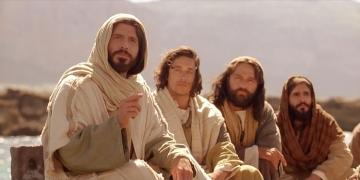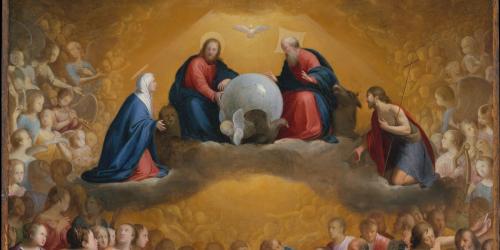March 19, 2019
Why Did Jesus Teach Using Parables?
Post contributed by
Stephen Smoot

One of the notable aspects of Jesus’ ministry is that He frequently taught using parables, or short religiously instructive stories “that make use of characters, situations, and customs familiar to their audience.”1 In fact, Jesus used nearly 50 parables and other metaphors during his ministry as recorded in the New Testament Gospels.

John W. Welch and Greg Welch, "Parables and Metaphors of Jesus," Charting the New Testament, 7-7.
The reason why Jesus taught in parables is made clear in Matthew 13. In this chapter, Jesus responds specifically to the question asked by his disciples, “Why speakest thou unto them in parables?” (v. 10).
He answered and said unto them, Because it is given unto you to know the mysteries of the kingdom of heaven, but to them it is not given. For whosoever hath, to him shall be given, and he shall have more abundance: but whosoever hath not, from him shall be taken away even that he hath. Therefore speak I to them in parables: because they seeing see not; and hearing they hear not, neither do they understand. And in them is fulfilled the prophecy of Esaias, which saith, By hearing ye shall hear, and shall not understand; and seeing ye shall see, and shall not perceive: For this people’s heart is waxed gross, and their ears are dull of hearing, and their eyes they have closed; lest at any time they should see with their eyes, and hear with their ears, and should understand with their heart, and should be converted, and I should heal them. But blessed are your eyes, for they see: and your ears, for they hear. For verily I say unto you, That many prophets and righteous men have desired to see those things which ye see, and have not seen them; and to hear those things which ye hear, and have not heard them. (vv. 11–17)
Contextually, the “them” spoken of in verse 11 are the men and women of Jesus’ general audience. Unlike the disciples, who were prepared to “know the mysteries of the kingdom of heaven,” some of Jesus’ listeners were not so prepared. The prophet Joseph Smith taught that this lack of preparation was due to unbelief in the ranks of Jesus’ wider audience.2 By teaching in parables and metaphors, Jesus could simultaneously speak to two different audiences, as it were.
One audience was His disciples who were spiritually prepared to discern deeper gospel truths in His parables “because of the faith and confidence which they had in him.”3 The other were men and women who were not so prepared but who might still find benefit from Jesus’ teachings.
Jesus, however, was not the only one to teach in parables. The Book of Mormon notably employs an extensive parable in Jacob 5—the so-called allegory of the Olive Tree. Likewise, the Doctrine and Covenants employs a parable to illustrate the nature of the redemption of Zion in the latter days (Doctrine and Covenants 101:43–62). The Prophet Joseph Smith often commented on the parables of Jesus and sometimes likened them to elements of the Restoration, such as the coming forth of the Book of Mormon.4
The versatility and broad applicability of parables—especially the parables of Jesus—make them a time-honored teaching method. “They are meant to convey a spiritual message, but the reader usually must infer the message from the story.” This puts some of the responsibility on the shoulders of the listener to be spiritually and intellectually attuned to a parable’s intended message. “Parables are seen to have several layers of meaning and may be understood differently, depending on the sensitivity and spiritual preparation of the hearer.”5
For this reason, any study of the parables of Jesus is ideally undertaken with the guiding influence of the Spirit. Through carefully studying the scriptural text while carefully listening to the promptings of the Holy Ghost, latter-day disciples of Christ can dive deep into the parables of Jesus and draw out deep spiritual meaning.
Further Reading
John W. and Jeannie S. Welch, The Parables of Jesus: Revealing the Plan of Salvation (American Fork, UT: Covenant Communications, 2019).
- 1. Susan Howe, “Parables,” in Encyclopedia of Mormonism, ed. Daniel H. Ludlow, 4 vols. (New York, NY: Macmillan, 1992), 3:1060.
- 2. “We draw the conclusion then, that the very reason why the multitude, or the world, as they were designated by the Savior, did not receive an explanation upon his parables, was, because of unbelief.” Letter to the Elders of the Church, 30 November–1 December 1835, online at www.josephsmithpapers.org.
- 3. Letter to the Elders of the Church, 30 November–1 December 1835, online at www.josephsmithpapers.org.
- 4. “The kingdom of Heaven is like a grain of mustard seed, which a man took and sowed in his field, which indeed is the least of all seeds, but when it is grown it is the greatest among herbs, and becometh a tree, so the birds of the air come and lodge in the branches thereof. Now we can discover plainly that this figure is given to represent the church as it shall come forth in the last days. Behold the kingdom of Heaven is likened unto it. Now what is like unto it? Let us take the Book of Mormon, which a man took and hid in his field; securing it by his faith, to spring up in the last days, or in due time; let us behold it coming forth out of the ground, which is indeed accounted the least of all seeds, but behold it branching forth; yea, even towering, with lofty branches, and God-like majesty, until it becomes the greatest of all herbs; and it is truth, and it has sprouted and come forth out of the earth; and righteousness begins to look down from heaven; and God is sending down his powers, gifts and angels, to lodge in the branches thereof.” History, 1838–1856, volume B-1 [1 September 1834–2 November 1838], online at www.josephsmithpapers.org.
- 5. Howe, “Parables,” 1060.

